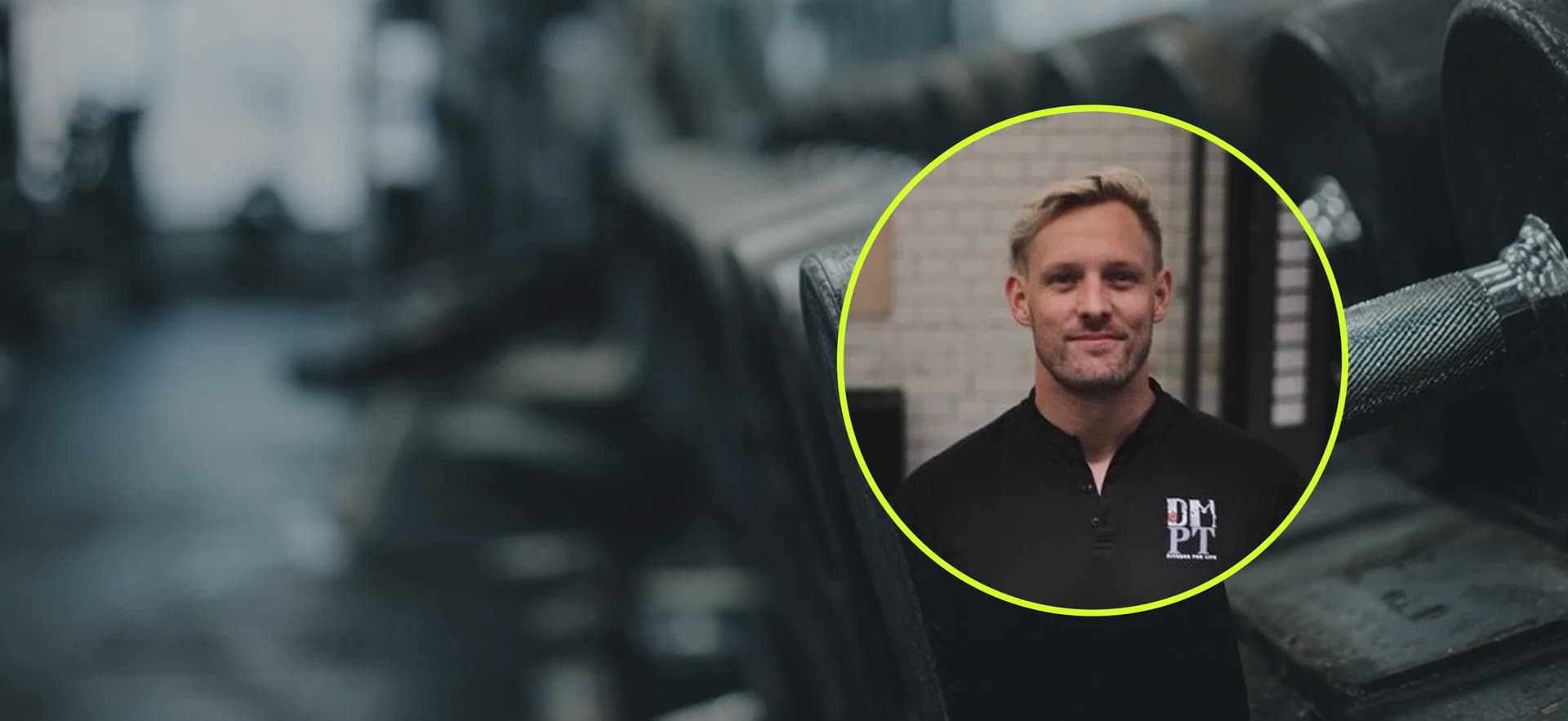Daniel McCarroll - The Trainer Who Helps People Move Without Fear
Daniel McCarroll, reframing training as problem-solving and helping with pain, movement restrictions, or long-standing injuries.

The Trainer Who Helps People Move Without Fear: An Interview with Daniel McCarroll
When you meet Daniel McCarroll, you quickly realize he’s not your average personal trainer. A former contemporary dancer from New Zealand turned CrossFit coach in London, he’s carved out a niche helping people who live in that frustrating in-between; not “injured enough” for medical care, but not thriving in a standard gym either.
We talked to Daniel about how dance shaped his approach to coaching, why he believes in intention over intensity, and what it really takes to rebuild trust in your body.
From Ballet to Better Movement
Daniel started his career as a contemporary dancer in New Zealand before moving to London, where a front-desk job at One Rebel pulled him into the fitness world. What began as rolling towels quickly turned into teaching classes, qualifying as a personal trainer, and diving deep into CrossFit.
The blend of precision, performance, and physical expression felt familiar from dance, but after years of coaching twenty-plus classes a week, he wanted more depth. He began reframing training as problem-solving rather than programming:
“It was about understanding what a client’s body is telling you before you even start,” he says.
Today that insight drives his work bridging the gap between healthcare and fitness, helping people who don’t just want to get fitter but want to move without fear.
The People Who Need Him Most
Daniel now specializes in clients with pain, movement restrictions, or long-standing injuries. Many of them have been told not to do certain things.
“I work with people who’ve heard ‘you can’t’ too many times,” he says. “Doctors mean well, but healthcare doesn’t always have the time to guide someone through rebuilding trust in their body. That’s where I come in.”
His process begins with a deep assessment, not just of joints and muscles, but of beliefs.
“We have to unpack fear. Why do you avoid this movement? Who told you it was dangerous? What are you actually afraid of?”
That kind of trust takes time.
“You can’t rush it,” he adds. “You have to honour the time it takes for the body to adapt; new tissue, new movement patterns, new confidence.”
Working with Older Adults
Daniel also coaches older adults, a group he says shares more with the “pain cohort” than most think.
“It’s the same story told by a different body,” he explains. “Someone in their sixties with arthritis isn’t that different from a thirty-year-old with an injury. Both have something that limits what they can do. The question is: are you accepting that, or are you choosing to change it?”
His motivation is personal.
“I’ve had knee surgeries, a ruptured Achilles, a shoulder injury; I know what it’s like when basic things become hard. It gives me empathy. And I look at my parents and grandparents and think: I want them to stay independent, to travel, to live fully. That’s what this work is about.”
The Message for Anyone Hesitating
“If you’re reading this and wondering whether it’s worth starting,” Daniel says, “look at where you are now. What are you avoiding? What do you wish you could do again? Then ask yourself: will doing nothing help me do that in five years?”
If not, something needs to change. Not all fitness builds longevity. Good training should make you capable, not just now but later.
How He Tracks Progress
Forget random PRs. Daniel’s approach is structured, data-informed, and human.
He starts with a joint-by-joint assessment: “Ankles, knees, hips; how do they move, where are the limitations?” From there, he measures flexibility, strength ratios, and balance between sides.
Programming follows the data.
“If your left ankle is tight, your squat and run will suffer. We work on that, retest in six weeks, and see improvement.”
But progress isn’t just numbers.
“I always ask how they feel. Confidence and movement quality matter as much as load. True progress is when a client can move without fear.”
Advice to His Younger Self
Daniel laughs when asked what he’d tell his younger self.
“Intention over intensity. Always.”
“As younger athletes, we chase intensity. Then wellness becomes this rehab project to fix what intensity broke. If I’d learned earlier to train with purpose instead of just effort, I’d have avoided a lot of injuries.”
On What the Industry Gets Wrong
He doesn’t mince words.
“I have an issue with the idea that confidence comes from how your body looks. That’s marketing, not health. We’ve tied emotional well-being to physical appearance; lose ten pounds, gain self-worth. It’s false.”
His take? “Transformation should be about function and longevity, not aesthetics. A body that moves freely, that lets you live your life; that’s confidence.”
Predicting the Next Big Shift
Despite the explosion of wearables, red-light therapy, and cold plunges, Daniel believes the real trend will be simplification.
“No matter how wild the tech gets, it always comes back to basics: sleep, nutrition, movement. The best recovery tool might just be a good night’s rest. If your wellness routine gives you anxiety, it’s missing the point.”
The Takeaway
Daniel McCarroll shows what modern training can look like — rooted in care, driven by insight, and defined by more than personal records.
He reminds us that fitness isn’t just about adding plates to the bar. It’s about reclaiming trust in your body, and the freedom that comes with it.